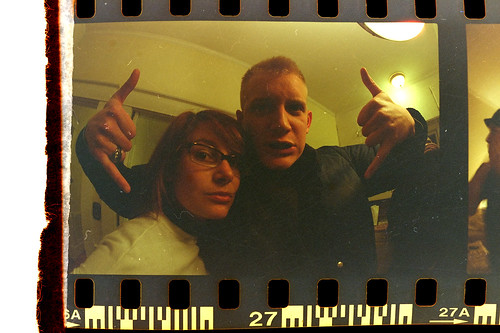
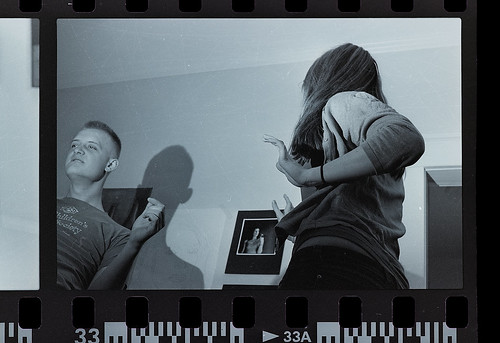
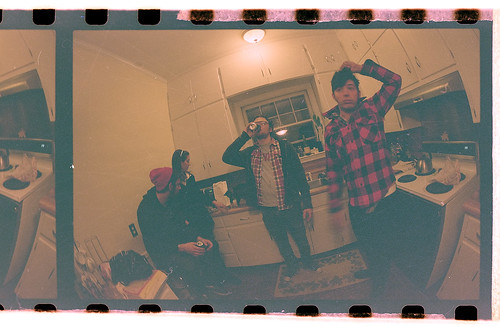
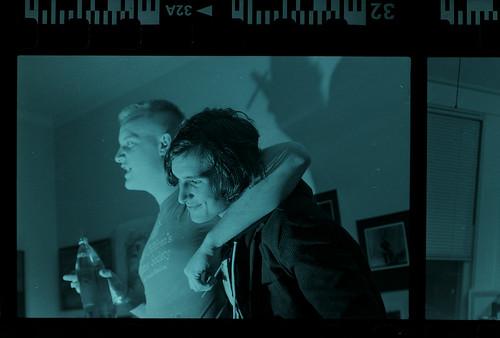

LQ and Gina's
2008-11-22
Nikon F2
Nikon Ai 16mm f/2.8 fisheye lens
Nikon Non-Ai 50mm f/1.4 lens
Ilford XP2 Super 400 35mm film
(expired) Kodak Gold 200 35mm film
Nikon SB-19 flash
Cactus V2s wireless flash triggers
I ran out of time while scanning negatives at school, so during a little bit of down time on internship, I decided to try a little idea..
I typically scan 35mm film photos on a Nikon Coolscan V ED. I wanted to see what I could do with a very basic (and somewhat halfass) light-table/copy-stand setup.
I used a small softbox under a translucent panel to act as a light table, a tripod and boom with a C-stand acted as my copy stand, and scrap matte board was used to cut down on glare/fogging.
The results are sketchy at best, due to several issues: the translucent panel was rather dirty and scratched. I did not set-up or use any kind of negative holder, so the negatives are not held flat against the panel. I set my focus and macro ratio (>1:1), but neither the C-stand nor tripod had any sort of geared rise/fall, so adjusting/repositioning the negatives was difficult. And many of the negatives themselves were poorly exposed making a less-than-ideal control/subject for this little experiment.
I made my "scans" with a Nikon D3 and Nikon AF 60mm f/2.8 macro lens. I edited the images through Adobe Photoshop CS3 and CS2. The black and white negatives cameout with a far lower contrast than desired. The C-41 processed XP2 has a red-ish purple base that becomes a cool cyan blue when inverted. I left the color in most as a style choice. The color negatives were also low contrast. And color was very hard to control. The inverted Kodak Gold 200 had a very blue cast. But the film was expired, color balanced for daylight, but shot under tungsten, and many were very under exposed. Also, I was unable to use dust cleaning, sharpening, grain and color adjustment features that come standard with Nikon Coolscan and other film scanning software.
In the end, I like the results. Because of the dust and scratches, along with the rough edges and distortion.
There was one positive result: Many of the very underexposed negative were virtually unsalvageable using the Nikon Coolscan V ED because of its automatic analog gain adjustment. Those negatives came out far better using my DIY method.
Setup shots:
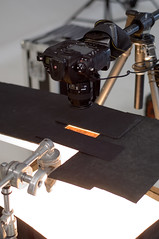


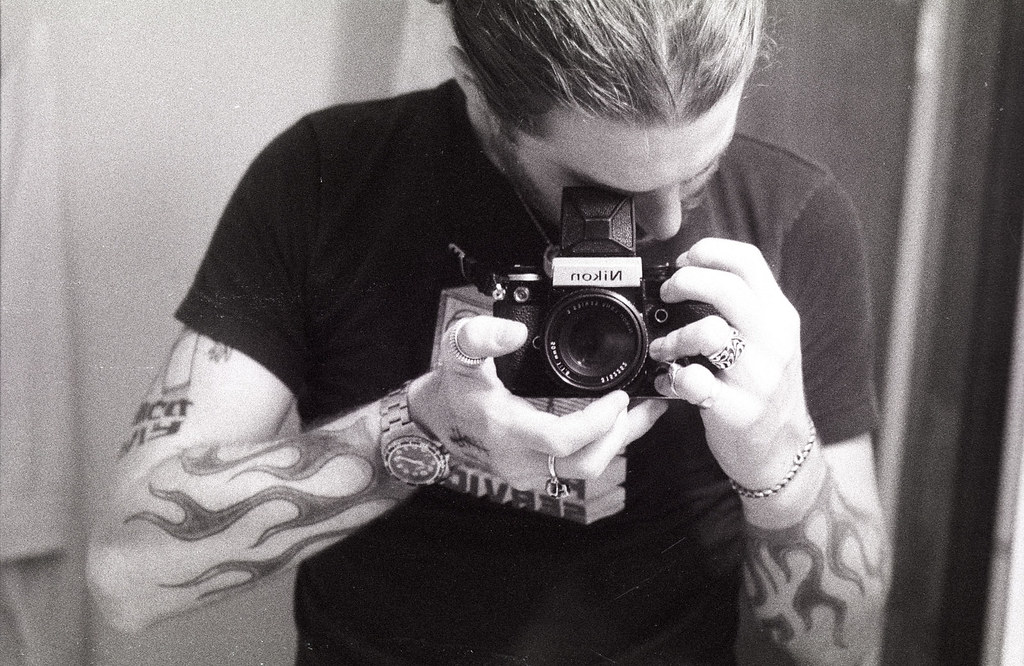
1 comment:
Hi Matt,
We just completed the first version or our commenting system that allows folks to attach and display images, web videos, files etc in every comment. It might be something you want to check out for your blog...it makes for much more engaging comments. www.commentreactor.com or check out some example threads at our demo blog: www.blog.commentreactor.com
Post a Comment